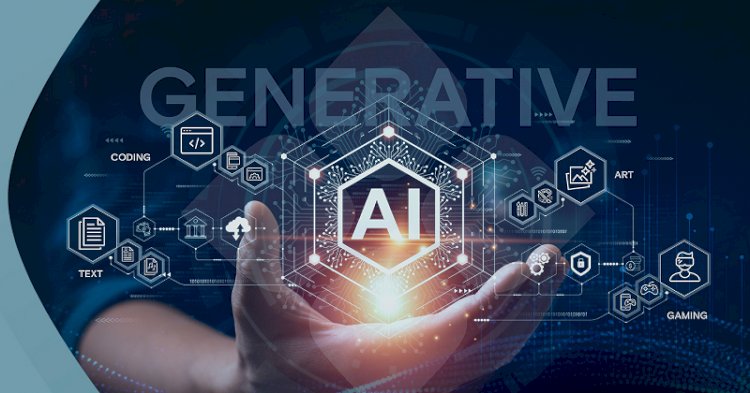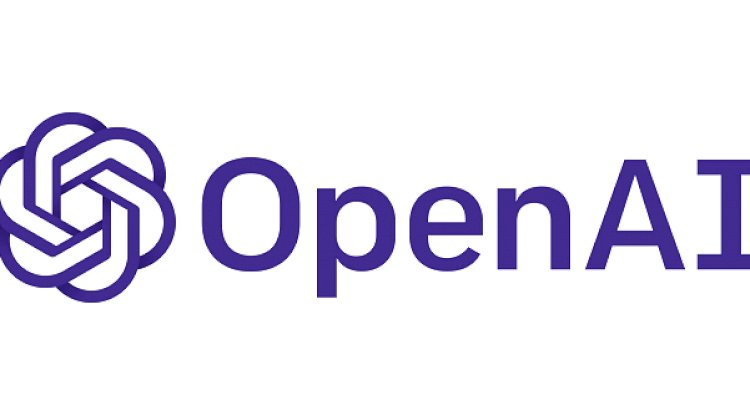The Leaders in Generative AI: Top Companies Pioneering the Future
Generative AI is transforming technology and these are the top companies leading the way. This article explores the top generative AI leaders like Anthropic, Cohere, Google, and more pioneering new innovations in AI. Learn about the promising technologies each company is developing in generative AI and computer vision along with their potential impacts. Get the inside scoop on the leading generative AI companies positioning themselves at the forefront to drive advancements and shape the future of this revolutionary technology.

As one of the leaders in artificial intelligence research, Google has been utilizing their vast resources to make great strides in generative AI. One of their most noted innovations is the development of the Pathways Language Model, also known as PaLM. Unveiled in 2022, PaLM demonstrates how gigantic neural networks with over 500 billion parameters can achieve remarkable natural language processing capabilities. PaLM can engage in multi-turn conversations, explain jokes, correct its own mistakes, and much more. Google has also introduced Imagen, an image generator model that can create high-quality images from text prompts. Built using a technique called diffusion, Imagen delivers photorealistic images displaying creativity. With access to massive datasets and computing infrastructure, Google continues to push boundaries in AI research. Their generative models like PaLM and Imagen exemplify how Google is effectively leveraging advanced language models and large-scale training techniques to drive progress.

In addition to models like PaLM and Imagen, Google is developing other promising generative AI applications. One highly anticipated model is Bard, a conversational AI system aimed to provide helpful information to users' questions. Still in testing, Bard utilizes learnings across text, images, and code to generate informed responses. Other models like Help Me Write and Help Me Organize assist users with writing and planning tasks using AI. Help Me Write can autocomplete sentences and entire passages to boost productivity. Help Me Organize helps structure thoughts and outlines for clarity. Meanwhile, Help Me Visualize leverages AI to automatically create infographics, diagrams, and other visual representations based on text descriptions. With continued research across models like Bard, Help Me Write, Help Me Organize, and Help Me Visualize, Google is exploring diverse applications of generative AI. These tools showcase Google's ambitions to make AI assistive, multipurpose, and accessible to users across languages.
Anthropic - Pioneering Self-Supervised Learning
Anthropic takes a unique approach to generative AI by focusing on self-supervised learning techniques that don't require large datasets. Their flagship model is Claude, an AI assistant trained using Constitutional AI to be helpful, harmless, and honest. Unlike models trained on public internet data, Claude learns in an ethical, controlled environment modeled on human learning. Anthropic's proprietary technique Constitutional AI restricts unsafe behaviors during training to align the model with human values. This produces an AI that can be trusted for open-ended conversations.

Anthropic also develops computer vision algorithms like DALL-E through self-supervised learning. By pioneering safe and effective self-supervised generative AI, Anthropic aims to prove models can be highly capable without compromising security or ethics. Their Constitutional AI framework is a promising step toward mitigating risks in increasingly powerful AI systems. With values-focused research, Anthropic sets itself apart in responsibly advancing generative models.
Cohere - Automating Creative Writing
Cohere focuses on large language models for automating and enhancing human writing. Their generative AI platform Cohere API allows businesses to integrate advanced natural language generation into apps and workflows. Users can feed the AI text prompts to produce original, human-like content on any topic in seconds. Beyond text, Cohere's speech synthesis creates realistic voices from transcripts. The API can also simplify text, summarize long passages, offer writing suggestions, and more. Cohere trains models on up to 30 billion words and fine-tunes them for specific use cases like chatbots, creative writing, and search optimization. With its simple API and vast generation capabilities, Cohere aims to make AI-assisted writing available to everyone.

The technology demonstrates how generative models are reaching new levels of fluency in mimicking human creativity. With use cases spanning content creation, conversational AI, and text analytics, Cohere continues pushing generative language models towards seamlessly automating a wide range of writing tasks.
OpenAI - Leading the Way in AI Safety
As a pioneer in generative AI research, OpenAI has emphasized responsible practices and AI safety from the outset. When releasing models like GPT-3 and DALL-E 2, OpenAI took careful measures to avoid potential harms. Their approach focuses on gradual deployment to limited audiences for testing before public release. OpenAI also researches techniques like social grounding to improve model ethics and accuracy. Initiatives like the Content Policy Research effort study mitigating risks of misinformation in generative models. On the engineering side, OpenAI developers created the Fine-Tuning API to allow safer, customized training. With safety guardrails in place, OpenAI aims to ensure language models act appropriately even in new contexts. The non-profit views judicious development and transparency as key to guiding AI in a beneficial direction. By keeping safety at the forefront, OpenAI sets an example for the field to develop generative models with caution. Their work on policies and practices strives to maximize societal gains as AI capabilities grow more advanced.

OpenAI continues pushing boundaries with even more powerful AI systems. While details are scarce, GPT-4 is reported to be in development as the next iteration of OpenAI’s transformer-based models. With capabilities expanded beyond text, OpenAI also created DALL-E 3 for generating not just images but even 3D models from textual descriptions. For programming, OpenAI introduced Code Interpreter to translate natural language to code in over a dozen languages. This allows users without coding knowledge to get executable code created just by explaining their intent. OpenAI has also previewed Anthropic Assistant, an AI system focused on being helpful, harmless, and honest by learning human values. With innovations across language, code, visuals, and human-aligned AI, OpenAI aims to demonstrate how generative models can tackle increasingly complex, real-world problems when thoughtfully developed. The steady progress in research and responsible practices is why OpenAI remains a leader pioneering what’s possible with generative AI.
Meta - Pushing Boundaries of Computer Vision
As a leader in computer vision research, Meta is pioneering new frontiers in generative image and video models. In 2022, Meta introduced the CLAIR model which can create cohesive, high-resolution images from text prompts. Built on OPT, their descending diffusion model, CLAIR generates realistic details through step-by-step refinements. Meta recently unveiled the Make-A-Video platform, which can render novel video clips in a range of styles based on text prompts. Drawing on research into text-conditioned video generation, Make-A-Video aims to give creators an intuitive tool for generating dynamic visual media. Meta is also developing universal speech translation models like No Language Left Behind to advance cross-lingual AI. With initiatives across generative image creation, video synthesis, and universal speech translation, Meta leverages its AI expertise to enable more expressive and accessible communication. The combination of computer vision and natural language research makes Meta a standout in building next-generation generative models.

Stability AI - Artistic Imagination with Stable Diffusion
Stability AI erupted onto the generative AI scene in 2022 with Stable Diffusion - a breakthrough text-to-image model that could create remarkably intricate digital artworks. Built using a technique called latent diffusion, Stable Diffusion stunned with its artistic capabilities and accessible implementation via extensions like Automatic1111. Though not the first diffusion model, Stable Diffusion offered new levels of creativity, visual coherence, and choice through features like inpainting and text-guided editing. Stability AI lowered barriers by making Stable Diffusion models and code freely available to researchers. Active development continues, with upgrades like Stable Diffusion 2.0 integrating 3D and video synthesis. By open sourcing such an ambitious and inventive model, Stability AI enabled a flourishing ecosystem of apps, tools, and concepts building upon their research. With Stable Diffusion, they proved generative art did not require massive resources. The ripples of Stable Diffusion throughout the AI arts community exemplify Stability AI’s monumental impact democratizing imaginative AI.

Final Words
The rapid evolution of generative AI presents exciting opportunities as well as responsibilities. While significant progress has been made, there is still much work to be done in developing these models thoughtfully. But the innovations driven by companies like Anthropic, Cohere, Google, Microsoft, OpenAI, Meta and Stability AI give hope for human-centric AI that augments our abilities without disrupting values. As this technology continues permeating our digital lives, maintaining ethical standards remains imperative. Thank you for reading – I hope this overview has provided perspective on the current landscape and future trajectories of generative AI. The road ahead will no doubt be challenging but also immensely rewarding if navigated with care. Maintaining optimism while exercising caution will serve us well as we build an AI-enabled future we can all thrive in.
What's Your Reaction?





















